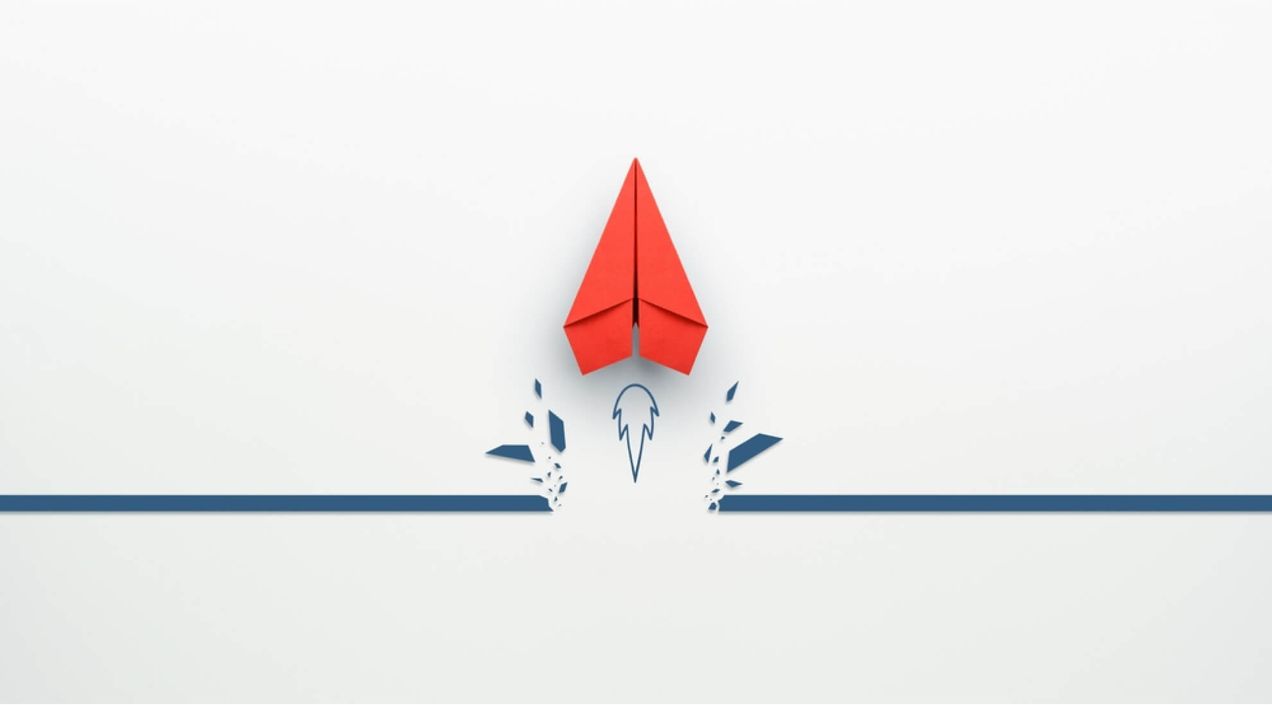What is leadership recognition: Top 25 examples to appreciate your managers in 2024

Great leaders inspire, motivate, and guide us toward success. They shoulder immense responsibility, navigate complex challenges, and dedicate themselves to empowering others. Yet, amidst the daily grind, their contributions can sometimes go unnoticed. It's time to shift the spotlight.
In 2024, let's champion leadership recognition. In this blog, we delve into its essence: what it is, why it matters, and how to ingrain it into company values. Discover 25 employee recognition message examples – from heartfelt gestures to strategic initiatives – that ignite appreciation and fuel leadership excellence.
Let's ensure their dedication doesn't go unseen. Join us on a journey to celebrate the leaders who shape our world, one meaningful act of recognition at a time.
What is recognition in leadership?

Recognition in leadership refers to the act of acknowledging and recognizing employees and appreciating the efforts, achievements, and contributions of individuals within a team or organization.
Effective leaders understand the importance of recognizing and celebrating the accomplishments of their team members, as it can have several positive impacts on both individuals and the overall team dynamics.
Recognition in leadership can take various forms, including employee recognition statements, written appreciation messages, acknowledgment, awards, or other forms of acknowledgment.
The key aspects of recognition in leadership include:
- Motivation: Recognition serves as a powerful motivator for individuals to continue working hard and contributing to the success of the team or organization. When people feel that their efforts are noticed and appreciated, it can boost their motivation and job satisfaction.
- Morale: Recognizing the achievements of team members can positively impact the overall morale within a group. It creates a positive and supportive work environment, fostering a sense of camaraderie and teamwork.
- Retention: Employees who feel valued and recognized are more likely to stay with an organization. Recognition contributes to employee retention by building a sense of loyalty and commitment.
- Performance improvement: Regular recognition can encourage individuals to strive for excellence and continually improve their performance. It reinforces positive behaviors and the importance of achieving goals.
- Cultural impact: Recognition can contribute to shaping the organizational culture. A culture that values and acknowledges the efforts of its members promotes a positive and collaborative work atmosphere.
Different types of leadership recognition programs

In contemporary organizational settings, effective leadership recognition programs serve as catalysts for fostering employee engagement, motivation, and overall productivity.
By acknowledging and celebrating the contributions of individuals and teams, these programs contribute significantly to creating a positive work environment.
Peer-to-peer recognition:
- This program empowers employees to recognize and appreciate their colleagues' efforts.
- It fosters a sense of camaraderie and teamwork, as recognition comes from peers who understand the challenges and accomplishments firsthand.
Managerial recognition:
- Supervisors and managers play a pivotal role in recognizing employees for their exceptional performance and contributions.
- Managerial recognition programs often include personalized gestures such as handwritten notes, one-on-one meetings, or public acknowledgment during team meetings.
Longevity awards:
- Recognizing employees for their years of service instills a sense of loyalty and commitment to the organization.
- Longevity awards can range from milestone certificates to personalized gifts, symbolizing appreciation for the dedication and loyalty demonstrated over the years.
Incentive programs:
- Incentive-based recognition programs incentivize employees to achieve specific goals or milestones.
- Rewards may include monetary bonuses, gift cards, or extra paid time off, motivating employees to go above and beyond in their performance.
Performance-based recognition:
- This program acknowledges individuals or teams for achieving exceptional results or surpassing predefined performance metrics.
- Recognition may be in the form of performance bonuses, promotions, or opportunities for career advancement.
Innovation awards:
- Recognizing employees for their innovative ideas and contributions encourages a culture of creativity and continuous improvement.
- Innovation awards can range from monetary rewards to public recognition and opportunities to lead special projects or initiatives.
Customer appreciation awards:
- Acknowledging employees who consistently provide exceptional service and contribute to positive customer experiences reinforces a customer-centric culture.
- Recognition may involve testimonials from satisfied customers, letters of appreciation, or special customer service awards.
What are the 10 leadership qualities of great leaders?

Great leaders possess a combination of various qualities that contribute to their effectiveness in guiding and inspiring others.
While there is no universally agreed-upon list of leadership qualities, many experts and studies highlight common characteristics shared by successful leaders. Here are ten key leadership qualities:
1. Vision
Great leaders have a clear and compelling vision for the future. They are able to articulate a purpose and direction that motivates and inspires their team. A vision provides a sense of purpose and helps guide decision-making.
2. Integrity
Integrity is fundamental to effective leadership. Leaders with integrity are honest, ethical, and consistent in their actions and decisions. They earn the trust and respect of their team by demonstrating strong moral principles.
3. Empathy
Empathetic leaders understand and consider the feelings, perspectives, and needs of others. They are skilled at listening and demonstrating genuine concern for the well-being of their team members. Empathy fosters positive relationships and a supportive work environment.
4. Resilience
Leadership often involves facing challenges and setbacks. Resilient leaders can bounce back from adversity, learn from failures, and maintain a positive attitude. They inspire resilience in their team and navigate through uncertainties with confidence.
5. Adaptability
In a dynamic and ever-changing business environment, adaptability is crucial. Great leaders are flexible and open to new ideas. They can adjust their strategies and approaches to meet evolving circumstances, fostering innovation and continuous improvement.
6. Communication
Effective communication is a cornerstone of leadership. Great leaders can convey their thoughts clearly, listen actively, and ensure that every team member understands the goals and expectations. Open and transparent communication builds trust and alignment.
7. Influence
Successful leaders have the ability to influence and inspire others. They lead by example and create a positive impact on their team. Influential leaders motivate others to achieve their best and create a shared sense of purpose.
8. Decisiveness
Great leaders possess the ability to make timely and effective decisions, even in the face of uncertainty. They weigh the available information, consult with relevant stakeholders, and take decisive action when needed. Decisiveness instills confidence in their team and keeps operations moving forward smoothly.
9. Humility
Humility is a trait that distinguishes exceptional leaders. They recognize their own limitations, seek feedback from others, and acknowledge the contributions of their team members. Humble leaders are approachable and foster a collaborative atmosphere where everyone feels valued.
10. Strategic Thinking
Leadership requires a long-term perspective and the ability to think strategically. Great leaders can analyze complex situations, anticipate future trends, and develop innovative strategies to achieve their vision. Strategic thinking enables leaders to navigate challenges and seize opportunities for growth and success.
Why is leadership recognition important for managers?

Leadership recognition is vital for managers as it plays a pivotal role in fostering a positive and productive work environment. When managers actively promote employee appreciation of their team members, it boosts motivation and morale.
Recognized employees are more likely to stay engaged, contributing to increased productivity and a sense of job satisfaction.
Moreover, leadership recognition aligns individual accomplishments with organizational goals, reinforcing the importance of shared objectives. This, in turn, helps build a culture of teamwork and collaboration.
Beyond tangible benefits, such as enhanced employee engagement and retention, leadership recognition contributes to the development of trust and loyalty. When employees feel valued, they are more likely to trust their managers and remain loyal to the organization.
Employee recognition messages also serve as a powerful tool for encouraging continuous improvement, as they reinforce the idea that innovative contributions are not only noticed but also valued.
How do you recognize good leadership?
Identifying and recognizing good leadership involves assessing various qualities and behaviors that contribute to effective guidance and positive impact within a team or organization.
One crucial aspect is the ability to inspire and motivate others towards a shared vision. A good leader demonstrates clear communication skills, ensuring that goals and expectations are transparent to the team.
Effective problem-solving and decision-making are key indicators of good leadership. A leader who navigates challenges with resilience, strategic thinking, and adaptability stands out. Furthermore, the capacity to build and maintain positive relationships is crucial.
A leader who fosters a collaborative and inclusive environment promotes teamwork and employee engagement.
Ethical conduct and integrity are fundamental. A good leader acts with honesty, fairness, and consistency, earning the trust and respect of their team.
Empathy and active listening are also vital, as a leader who understands and considers the unique perspective and the needs of their team members can foster a supportive and positive workplace culture.
Results and outcomes are essential indicators of leadership effectiveness. A good leader achieves goals, drives performance, and ensures the success of their team. Additionally, a focus on continuous learning and development signifies a leader who invests in personal and team growth.
In essence, recognizing good leadership involves evaluating a combination of qualities such as vision, communication, problem-solving, ethical conduct, empathy, results, and a commitment to continuous improvement. Leaders who excel in these areas contribute significantly to the success and well-being of their teams and organizations.
25 Manager leadership recognition examples to get inspiration from

Here are 25 examples of employee recognition examples to inspire you:
- For visionary leadership: "Your visionary leadership has propelled our team toward new heights. Your ability to see beyond the horizon and guide us with clarity is truly commendable."
- For team collaboration: "In recognition of your outstanding collaboration skills, thank you for creating a team environment where ideas flourish, and everyone feels empowered to contribute."
- For resilience in challenges: "Your resilience in the face of challenges is inspiring. Your ability to lead with grace under pressure sets an exemplary standard for the entire team."
- For effective communication: "Your clear and effective communication has been a cornerstone of our success. Thank you for keeping us informed, engaged, and aligned with our goals."
- For problem-solving prowess: "Your exceptional problem-solving skills have been instrumental in overcoming obstacles. Your strategic thinking and resourcefulness make you a true leader."
- For employee development: "In recognition of your commitment to employee development, thank you for fostering a culture of continuous learning and growth within our team."
- For ethical leadership: "Your unwavering commitment to ethical leadership sets the tone for our entire organization. Thank you for leading with integrity and guiding us by example."
- For inspirational leadership: "Your ability to inspire and motivate others is truly remarkable. Your leadership is a beacon that guides us all toward success."
- For innovation and creativity: "Thank you for fostering an environment of innovation and creativity. Your openness to new ideas has sparked a culture of continuous improvement."
- For results-driven leadership: "Congratulations on achieving outstanding results! Your results-driven leadership has been a driving force behind our team's success."
- For inclusive leadership: "In recognition of your inclusive leadership, thank you for creating a diverse and supportive workplace where every voice is heard and valued."
- For empathy and team support: "Your empathetic leadership and unwavering support have created a positive and caring work atmosphere. Thank you for your genuine concern for the well-being of the team."
- For adaptability and flexibility: "Your adaptability in navigating change and uncertainty is commendable. Your flexibility and resilience have helped the team navigate challenges with confidence."
- For fostering teamwork: "Your dedication to fostering teamwork has strengthened our bonds and enhanced collaboration. Thank you for promoting a culture where we support and uplift one another."
- For strategic delegation: "In recognition of your strategic delegation skills, thank you for entrusting tasks effectively and empowering team members to excel in their roles. Your trust and confidence in our abilities fuel our motivation."
- For accountability and responsibility: "Your unwavering commitment to accountability and responsibility serves as a guiding light for our team. Your diligence in taking ownership of tasks and ensuring their successful completion is truly commendable."
- For mentorship and guidance: "In recognition of your mentorship and guidance, thank you for investing your time and expertise in nurturing our professional growth. Your willingness to share knowledge and offer guidance has been invaluable in shaping our development."
- For transparency and openness: "Your commitment to transparency and openness cultivates trust and fosters a culture of honesty within our team. Thank you for your willingness to share information and engage in open dialogue, creating a sense of transparency that strengthens our collaboration."
- For initiative and proactive leadership: "Congratulations on your proactive leadership! Your initiative in identifying opportunities and taking decisive action has propelled our team forward. Thank you for your proactive approach, which inspires us to tackle challenges head-on and strive for excellence."
- For patience and understanding: "Your patience and understanding in guiding us through complex projects and tasks are deeply appreciated. Thank you for your calm demeanor and willingness to listen, which fosters a supportive environment where we can learn and grow."
- For innovation in problem-solving: "Thank you for your innovative approach to problem-solving! Your ability to think outside the box and explore creative solutions has been instrumental in overcoming obstacles and driving progress. Your innovative mindset inspires us to push boundaries and seek new opportunities."
- For continuous improvement efforts: "Your dedication to continuous improvement is evident in your ongoing efforts to refine processes and enhance efficiency. Thank you for your commitment to excellence, which motivates us to continually strive for improvement and innovation in our work."
- For strategic foresight and planning: "Your strategic foresight and meticulous planning have been instrumental in guiding our team toward success. Thank you for your visionary leadership, which enables us to navigate challenges with confidence and seize opportunities for growth."
- For conflict resolution skills: "In recognition of your adeptness in conflict resolution, thank you for fostering a harmonious work environment where issues are addressed promptly and effectively. Your skillful mediation and diplomacy contribute to a positive and productive workplace culture."
- For commitment to work-life balance: "Thank you for your commitment to promoting work-life balance within our team. Your support for personal well-being and encouragement of a healthy work-life balance demonstrate your dedication to the overall happiness and fulfillment of team members."
How do manager engagement surveys help in gauging individual manager’s engagement levels?

Manager engagement surveys are such an asset that can help in assessing individual manager engagement levels within an organization. These surveys provide a structured and systematic method for gathering feedback from employees about their managers' leadership styles, communication, and overall effectiveness.
By gauging individual manager engagement, organizations can identify areas of strength and areas for improvement, fostering a culture of continuous growth and development.
Firstly, manager engagement surveys often include questions that assess the quality of relationships between managers and their teams. These questions may explore communication effectiveness, the accessibility of managers, and the perceived level of support provided.
Through this feedback, organizations can understand how well managers are connecting with their teams, addressing concerns, and fostering a positive working environment.
Secondly, these surveys typically probe into the alignment of managerial actions with organizational values and goals. This helps evaluate whether managers effectively communicate and reinforce the company's mission and objectives.
It provides insights into how well managers are translating the broader organizational vision into actionable goals and motivating their teams toward shared objectives.
Moreover, manager engagement surveys can uncover areas where professional development and training may be beneficial.
Understanding individual manager engagement levels allows organizations to tailor leadership development programs to address specific needs, ensuring that managers receive the support and resources necessary to enhance their leadership skills.
Role of team engagement software in helping leaders recognizing managers for their good efforts

Team engagement software plays a crucial role in helping leaders manage their employee recognition efforts in aligning and engaging their teams effectively. Here's how:
1. Real-time feedback
Team engagement software allows for real-time feedback from team members. Leaders can use this feature to gather insights into how well managers are aligning their teams with organizational goals. Positive feedback regarding team alignment efforts can be highlighted and acknowledged promptly.
2. Performance analytics
These software solutions often provide performance analytics and dashboards that offer a comprehensive view of team and individual performance.
Leaders can use these analytics to identify managers and recognize employees who excel in team alignment, making it easier to recognize and reward their efforts.
3. Recognition and rewards features
Many team engagement platforms come equipped with features for recognition and rewards for outstanding performance.
Leaders can use these tools to publicly acknowledge and reward managers who demonstrate exceptional skills in aligning their teams. This not only recognizes individual efforts but also reinforces the importance of team alignment within the organization.
4. Goal tracking and progress monitoring
Team engagement software often includes goal-setting and progress-tracking features. Leaders can use these tools to assess how well managers are setting and achieving team goals that align with the broader organizational objectives. Recognition can be tied to the successful attainment of these goals.
5. Communication channels
Effective communication is key to team alignment. Team engagement software often includes communication channels, facilitating transparent and open communication within teams. Leaders can recognize managers who utilize these channels effectively to keep their teams informed and aligned.
Conclusion
Effective employee recognition programs are a cornerstone of organizational success, fostering a culture of appreciation, motivation, and continuous improvement. Leaders who actively acknowledge and celebrate the achievements of their teams contribute to increased employee engagement, higher morale, and a positive work environment.
Recognizing good leadership involves appreciating a combination of qualities such as vision, integrity, empathy, and adaptability. By implementing leadership recognition programs, managers can inspire their teams to excel, ultimately driving overall performance and achieving organizational goals.
Moreover, the integration of team engagement software amplifies the impact of leadership recognition by providing real-time feedback, performance analytics, and tools for communication and goal tracking.
This technology empowers leaders to identify and acknowledge managers who excel in aligning their teams with organizational objectives. By leveraging such platforms, organizations can create a dynamic feedback loop, fostering a culture of employee recognition programs, and continuous improvement.
FAQs
How do you give recognition to a leader?
Recognizing a leader can involve various methods such as verbal praise during team meetings, personalized notes expressing gratitude, nominating them for awards, or publicly acknowledging their achievements. Additionally, involving peers and subordinates in the recognition process through feedback or peer-to-peer recognition programs can enhance its impact and foster a culture of appreciation.
How does leadership recognition contribute to employee motivation and morale?
Leadership recognition significantly enhances employee motivation and morale by affirming their efforts and contributions, nurturing a deep sense of appreciation and belonging. When leaders receive acknowledgment for their achievements, it establishes a compelling precedent for emulation, catalyzing heightened engagement, loyalty, and dedication among team members, thereby fortifying the organizational culture and propelling collective success.
How can leadership recognition programs be implemented and sustained?
Implementing leadership recognition programs involves establishing clear criteria for recognition, incorporating feedback mechanisms, and ensuring consistency and fairness in the recognition process. To sustain these programs, organizations should regularly review and adapt recognition strategies based on evolving needs and priorities, while also providing resources and training to managers to effectively administer recognition initiatives.
How can leaders themselves contribute to fostering a culture of recognition?
Leaders can foster a culture of recognition by leading by example, actively acknowledging and appreciating the contributions of their team members, and integrating recognition into regular interactions and communication channels. They can also empower employees to participate in recognition programs, encourage peer-to-peer recognition, and provide ongoing feedback and support to reinforce a culture of appreciation.
How can leadership recognition contribute to building a positive company culture?
Leadership recognition contributes to building a positive company culture by reinforcing core values, promoting collaboration and teamwork, and creating a supportive and inclusive work environment where employees feel valued and respected. Recognized leaders serve as role models, embodying the organization's culture and inspiring others to contribute positively to its success, ultimately strengthening employee engagement and loyalty.



